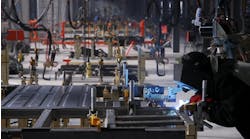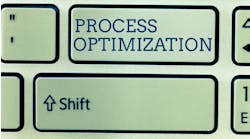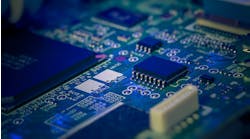How the Inflation Reduction Act can advance your manufacturing goals
Recession fears, the cost of capital, pervasive inflation, and volatile energy costs are headwinds facing the manufacturing industry today, but the recent Infrastructure and Investment Jobs Act (IIJA) and Inflation Reduction Act (IRA) will help fuel domestic manufacturing and low-carbon technologies. This investment seeks to reshape our nation’s infrastructure through direct funds, grants, tax credits, tax incentives, and rebates. This, along with increased onshoring, help to serve as much needed tailwinds in a volatile economy.
While many companies are competing for funding, the majority of applications for the program have not been filed yet. Applications will be accepted for the next two years as part of the third window of the application process, which will be the period that the majority of applications will be processed, particularly for existing industries’ requests.
Let’s dive deeper into what the funds are for, how this benefits manufacturers, and how to efficiently evaluate the new law to reap the benefits of newly unveiled tax credits.
The stimulus is set to spark domestic manufacturing
The IRA provides $370 million in tax credits for climate and energy proposals centered around hydrogen, nuclear, renewables, and distributed-energy resources (DERs) such as solar, storage, microgrids, and EV charging and infrastructure. With several clean energy tax credits and provisions included (like the $300 billion allocated to DOE, EPA & USDA for clean energy financing programs and 30% tax credits for investment in domestic manufacturing or recycling of advanced energy equipment), this new bill aims to help strengthen our economy, bring manufacturing back onshore and build a reliable and affordable energy sector.
There is $71 billion designated for manufacturing mostly via 48k tax credits, which are a mix of Investment Tax Credits (ITC) and Production Tax Credits (PTC). PTC’s are for companies that invest in alternative-energy sources and relieve pressure on the power grid. They can recoup as much as 45% of the cost of these investments. We are seeing a tremendous spike in domestic manufacturing of low-carbon infrastructure components, battery plants and a large wave of megaprojects in semiconductors, liquified natural gas, refining, and green energy investments as a result of this bill.
Given that a recent BloombergNEF report shows that more than half of vehicles are expected to be electric by 2030, the $6 billion allocated for commercial/heavy duty EV procurement and charging infrastructure will be critical to helping build the infrastructure necessary to support mass production and deployment of these vehicles.
So, how do businesses put their best foot forward in this third application phase to secure funding?
Securing funding: The need to measure real-time energy consumption
The IRA can benefit existing manufacturing operations as well as greenfield projects. Qualified project types include: facility Infrastructure upgrades (powerhouse, distribution, building automation such as boiler/chiller/compressor/HVAC), energy storage, renewable energy sources and indoor air quality and EV Infrastructure. In order for an existing operation to qualify, it must first be able to accurately measure energy consumption by area, or by process, in real-time. Projects with a proven ROI and that can demonstrate a reduction in carbon footprint are the ones Uncle Sam will more likely favor.
The most effective way an organization can gain a holistic view of their goals and assess which projects qualify for available credits is by examining the data along with understanding the way that their energy costs are actually billed. For example, most industrial/commercial utility bills vary not only by the totalized amount of usage but by the manner in which the consumption occurs. Peak demand magnitude and duration periods determine not only the billing period costs to companies; this information is also used to determine the utilities’ production capacity needs. The “spirit” of the IRA and other subsidies is to address all of these areas. Organizations looking to make their facilities more productive and efficient without increased energy costs can look to the IRA for help and, in essence, fund sustainability.
Let’s get specific: Three business-growth initiatives that meet the IRA criteria
To get specific, three key initiatives we’ve seen companies focused on recently that meet tax incentives criteria include:
- Combining renewable energy and e-mobility: this creates a value chain that is truly circular (renewable), which would qualify for many different credits in this program.
- Microgrids, biomass, cogen: The “electrification” of our nation is expanding at an unprecedented rate. However, the traditional electrical production infrastructure is not. Fossil fuel power plants continue to disappear. Nuclear generation plants take years to germinate, are costly, and lack public support. Hydro-electric is attractive, yet there aren’t many new rivers or lakes appearing or in planning. Industrial, commercial and private production capabilities are immediately essential. Current real-time power management and on-site production capacity will be the differentiator moving forward.
- 179D commercial buildings energy-efficiency: this is an energy tax deduction for installing qualifying systems in buildings (centered around air quality) with the goal of reducing pollutants and greenhouse gasses. Originally called Epac 2005, it’s been expanded underneath the IRA Act and includes tax credits for things like improving HVAC systems.
Businesses can apply for these credits and financial incentives every three years, paving the way for long-term savings and growth opportunities. Companies can also sell their tax deductions if they are exempt, which can still financially benefit even businesses that don’t pay taxes.
Not an either/or: Investing and offsetting in industrial manufacturing
For new capital projects and infrastructure being built as part of reshoring efforts, there is an emphasis on going green in the manufacturing process. To do so, businesses have two choices: they can invest in the infrastructure needed to transform operations long term, or they can pay for carbon offsets. Instead of spending money elsewhere, the IRA empowers organizations to be more green AND offset investments at the same time.
Many corporations take pride in saying that they are “carbon neutral.” Staking this claim carries far more value than the benefits to the facilities themselves. Increasingly, it's what consumers use to base their purchasing decisions, helping to boost brand loyalty and position the organization as a leader in sustainability.
These new tax deductions help uplevel the conversation within forward-thinking organizations, encouraging leadership to consider the greater impact of investing in and building more efficient, sustainable and resilient operations. Beyond the transactional benefits, saving on energy costs or cashing in on a rebate, the recent government-stimulus funds should motivate leaders to consider how to use the combination of these grants, loans, and tax deductions to accomplish critical goals because it's, quite simply, the right thing to do.
The IRA helps increase the ROI of manufacturing-process improvements that provide multiple benefits: environmental, social and governance (ESG), lower costs, increased reliability and addressing obsolescence. This influx of capital will be a lynchpin to building a greener, brighter future for the next generation, ensuring we collectively leave a legacy of which we can be proud.



